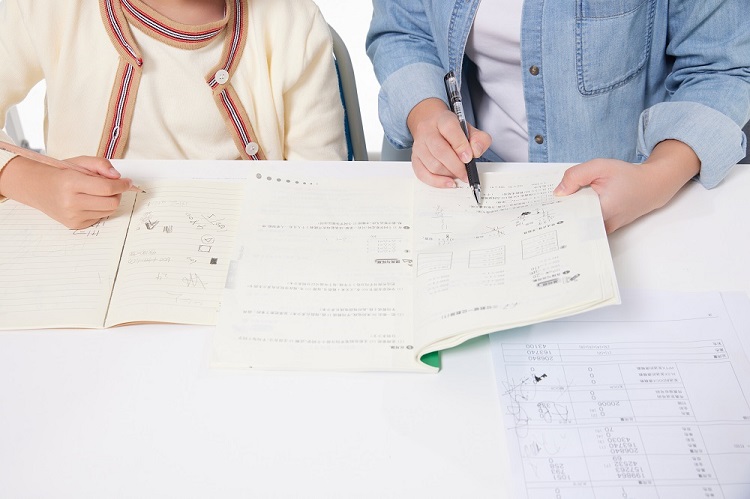News& Information
-
Medical Trends
 Home -> News& Information -> Medical Trends
Home -> News& Information -> Medical Trends
Children Learning Disorders
Dysgraphia and Dyslexia
Some children might face different kind of learning problems. One of this difficulty is Dysgraphia or writing difficulty which can be noticed in early elementary school when children begin to learn to write. In this article will introduce children reading and writing problems which are two of the main tools of learning for children to succeed in their education. They are called Dysgraphia (writing disorder) and Dyslexia (reading disorder).

Children with Dysgraphia have difficulty in spelling and producing words in a written form while children with Dyslexia have problems with reading and understanding written words.
If these problems are not intervened at an early age may have a negative effect on children learning abilities and school performance. Without intervention and special training for each of these disorders, children will carry these difficulties to their adulthood.
In this article we focus on children writing problem or Dysgraphia.

Our next topic will be about Dyslexia or reading problem in children and how to improve their reading as well as Executive Functioning which is as important for children with learning disorders including Dysgraphia and Dyslexia.
What is Dysgraphia?
Dysgraphia is a neurological problem and come in different types. Children with Dysgraphia have problem with writing, spelling, organizing and expressing their thoughts in writing as well as having problem writing eligibly. Dysgraphia is considered a learning disability which affects children writing quality. The cause is not quite clear but it might be related to problem with parietal lobe of the brain.
What is Dyslexia?
Dyslexia is a reading disorder. Children with Dyslexia have difficulty reading and understanding written words. Dysgraphia and Dyslexia might have few similar signs including difficulty with spelling.
Which other difficulties may accompany Dysgraphia?
Children with Dysgraphia may have other difficulties including Dyslexia, ADD and or ADHD. Some children with Dysgraphia due to frustration or stress of improving their writing or spelling may become anxious and or sad which makes them to struggle even more. Anxiety and sadness can lead to inattention and lack of concentration and cause more difficulty dealing with improving their writing quality and or other difficulties in writing.
What are the signs of Dysgraphia?

Omit words when writing a sentence
Difficulty in putting their thoughts in writing
Not using word correctly
Often erase when writing
Poor hand writing
Poor writing grammar and organization
Poor spelling
Difficulties in writing neatly
Poor use of wrist when writing
Slow writer
How to assess and diagnose Dysgraphia?
To diagnose Dysgraphia would require full evaluation of child’s ability using combination of standardized tests to assess child’s different difficulties and ruling out other forms of learning disabilities and or emotional issue which may accompany Dysgraphia. These tests assess child’s cognitive function, memory, executive function, achievement, word reading, sentence comprehension and more.
What is the role of Executive Function for children with Dysgraphia?
Executive Functioning is the director or conductor of cognitive skills. It allows children use their cognitive and learned skills for their tasks at hand.
Working memory or (temporary storage of learned information) is one of the important components of Executive Functioning.
Good working memory is an important factor for children learning ability and quite critical for children with any forms of learning disability.
When children have difficulty with Executive Functioning, any tasks which require the following list of abilities become difficult for these children. They include:
Flexibility in thinking
Working memory
Self-control
Emotional regulation
Time management
Planning
Organization
How parents, learning specialist and child psychologist can help children with Dysgraphia?

Following are some of the ways that can help children with Dysgraphia to overcome their writing difficulties
-Remedial training using multi-sensory strategies to improve child’s writing skill including spelling, punctuation, rules of grammar and more
-Train children how to use pencil grip to improve their writing
-Provide your child with pencil grip to hold pencil properly
-Parents can purchase writing tools online for their children to help improve their writing ability
-Train child how to write neat and in the right space on the paper
-Enroll them in Executive functioning training to improve their working memory and other learning abilities
-Treatment of child’s emotional issue including anxiety when child shows such symptoms in order to improve child’s mood, memory and attention which are necessary for learning including writing ability.
-Assess and treat other difficulties which might accompany Dysgraphia including ADD, ADHD and Dyslexia.




